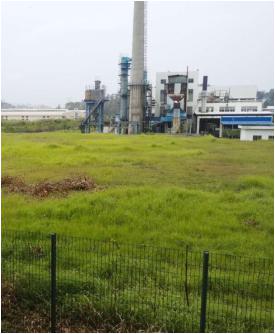What types of deodorants are divided into?
deodorants There are mainly several types: physical deodorants, chemical deodorants, microbial deodorants, plant-based deodorants, and composite deodorants.
Physics class
Physical deodorants are used for deodorization through physical methods. The use of deodorants may affect the physical properties of the odor, without altering the composition of the odor, only changing the partial concentration, or relative concentration, of the odor. Common ones include adsorption deodorants, masking deodorants, etc
Adsorption deodorant
Adsorption deodorant is a method of deodorization that uses substances with excellent adsorption capacity and intermolecular van der Waals forces to adsorb odor molecules into porous materials. Deodorants have a larger surface area and larger air capacity, and can usually adsorb and reduce the concentration of odor in the air to achieve the purpose of deodorization.
For example, "septic tank deodorant" uses a new phosphorus free formula, which is atomized to form a large surface energy on the surface of small droplets. This surface can adsorb odor molecules in the air, and the dissolution process of odor gases involves mass transfer from gas phase to liquid phase, causing changes in the structure of odor molecules and making them unstable; At this point, useful molecules in the solution can provide electrons to odor molecules and react with them; Together, odor molecules adsorbed on the surface of droplets can also react with oxygen in the air. After the effect of this agent, odor molecules will generate odorless molecules such as nitrogen, water, etc.
Masking deodorants
Masking deodorants use natural aromatic oils, spices, and other substances to mask the odor. Mainly aimed at many difficult to remove odors or environments where deodorization is difficult, mix several gases with gas levels in proportion to reduce the odor.
A tasteless masking agent with slow-release function prepared using polymer nanocapsulation technology. The standard particle size of its microcapsules is 20-80 nanometers. It can disperse excellently in aqueous liquids, and when added, it will not disrupt the formula balance of the liquid; Due to the specific function of the product, it has a natural inhibitory effect on the production of fungi and molds. Achieve outstanding results of killing two birds with one stone.

Chemistry
Chemical deodorants use oxidation, recovery and differentiation, neutralization reaction, addition reaction, condensation reaction, ion exchange reaction, etc. to convert the produced odorous substances into odorless substances and then eliminate the odor.
Oxidative deodorant
NaClO、 Chlorine and other oxidants oxidize organic sulfur and amines in the odor into compounds with lighter odor or higher solubility, and then absorb and purify them with acid and alkali.
Salt compounds
Using salt compounds as deodorants, such as divalent iron ions and ascorbic acid, to inhibit oxidation and react with foul smelling substances such as ammonia and mercaptan to turn them into odorless substances; The coordination bodies of trivalent iron derivatives and metal complexes undergo displacement reactions with thiols or sulfur, converting odorous substances into odorless substances.
Acid and alkali preparations
Using acidic or alkaline substances as deodorants, such as zinc oxide and hydrogen sulfide, can cause non catalytic gas-solid phase reactions and remove hydrogen sulfide gas from the air; Flavonoids and tannic acid, as well as other wood essential oil components, undergo encapsulation, neutralization, and addition reactions to remove odorous substances.
Microbial type
The basic principle is to use microorganisms to absorb the odor substances in dissolved water into the microbial body, and through the metabolic activity of microorganisms, it is a process of degradation. Microbial deodorization can be divided into three stages:
① The dissolution process of foul smelling gases, that is, the transfer from the gas phase to the liquid phase;
② The odor components in aqueous solutions are adsorbed and absorbed by microorganisms;
③ The foul odor components that enter microbial cells are used as nutrients by microorganisms to differentiate and remove pollutants.
The bio deodorant made by combining chitosan with alcohols extracted from plant fibers using modern biotechnology skills not only contains high content of natural biopolymers such as chitosan, but also plant leachate containing over 200 organic and antibacterial substances, thus possessing strong sterilization, disinfection, and deodorization functions. The principle of chitosan biological deodorant for odor treatment is to use microorganisms to absorb the odor substances in dissolved water into the microbial body, and through microbial metabolic activity, it is degraded.
The article originates from a deodorant manufacturer http://www.scneng.com.hk
-
06-11
"Environmental Doctor" Du Siyuan: Environmental Protection is a Lifestyle Attitude
There is a Hong Kong compatriot in Jiangmen who often frequents various farms and plantations, walks in mechanical factories, and is seen by others as the nemesis of environmental problems. He conside
-
03-16
Deodorant manufacturer: Deodorants reduce soil pollution
Waste is a chaotic mixture of various components. The accumulation of debris on the surface of soil can cause some chemical reactions, releasing harmful gases, which can lead to soil pollution and eve
-
12-01
Deodorant Manufacturers: Differences between Microbial Deodorants and Traditional Deodorants
The waste that is not needed in our daily life and work is called waste. Due to the large amount of waste discharged and the complex categories, there are great difficulties in reducing waste and deod
-
11-08
Application of Deodorant Manufacturers in Domestic Waste Treatment
Garbage is the waste generated in everyone's daily life and work. Due to its large discharge volume and complex and diverse composition, it poses great difficulties in reducing and deodorizing wa
